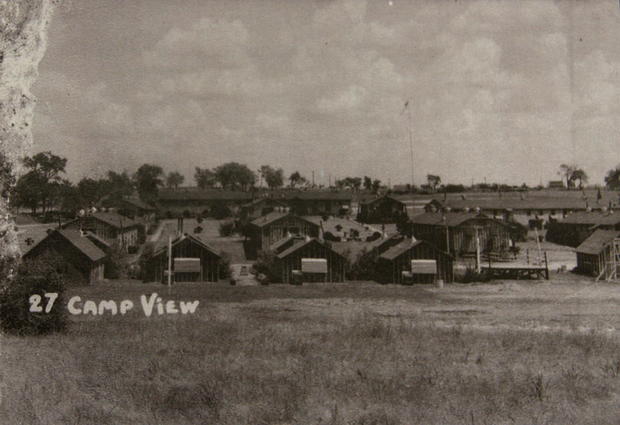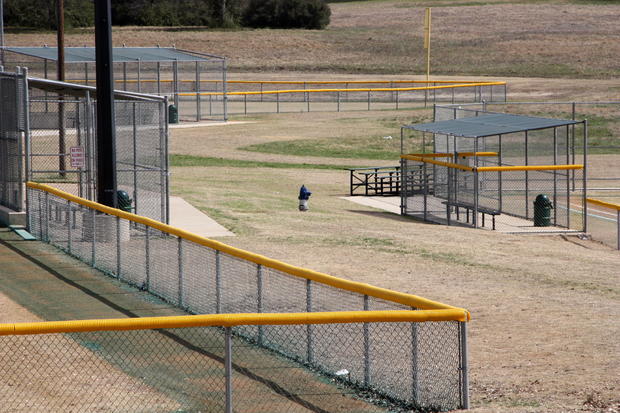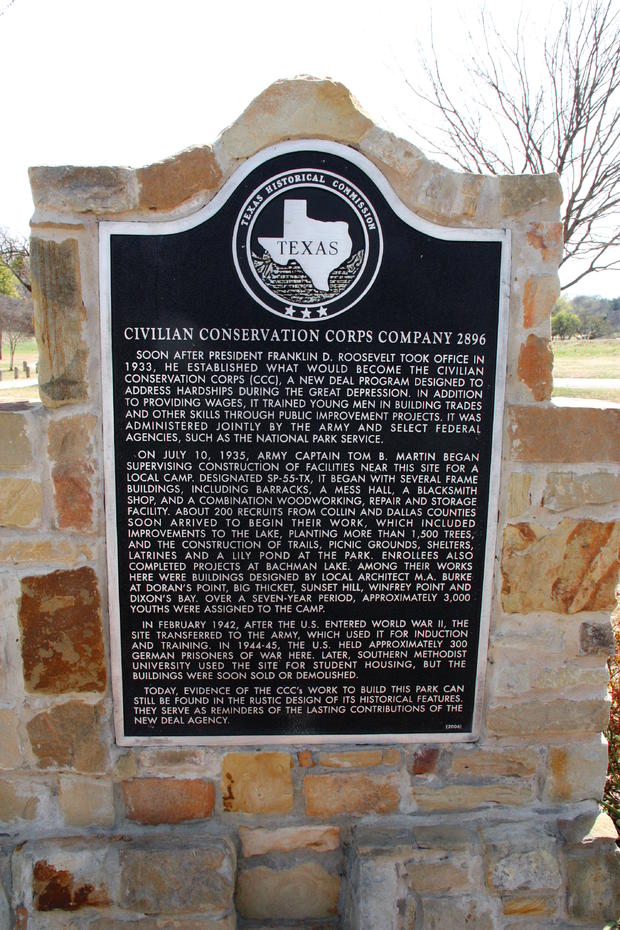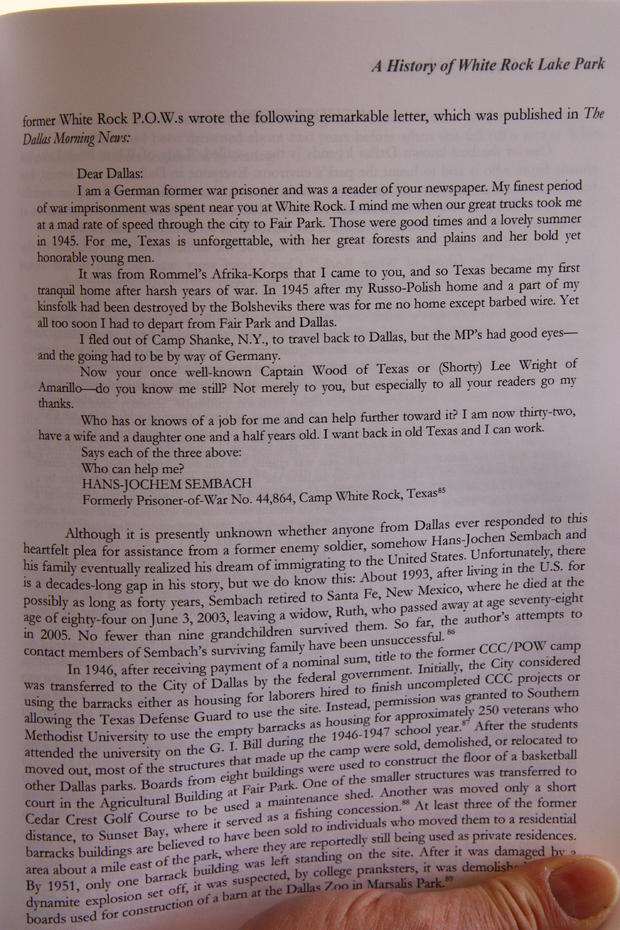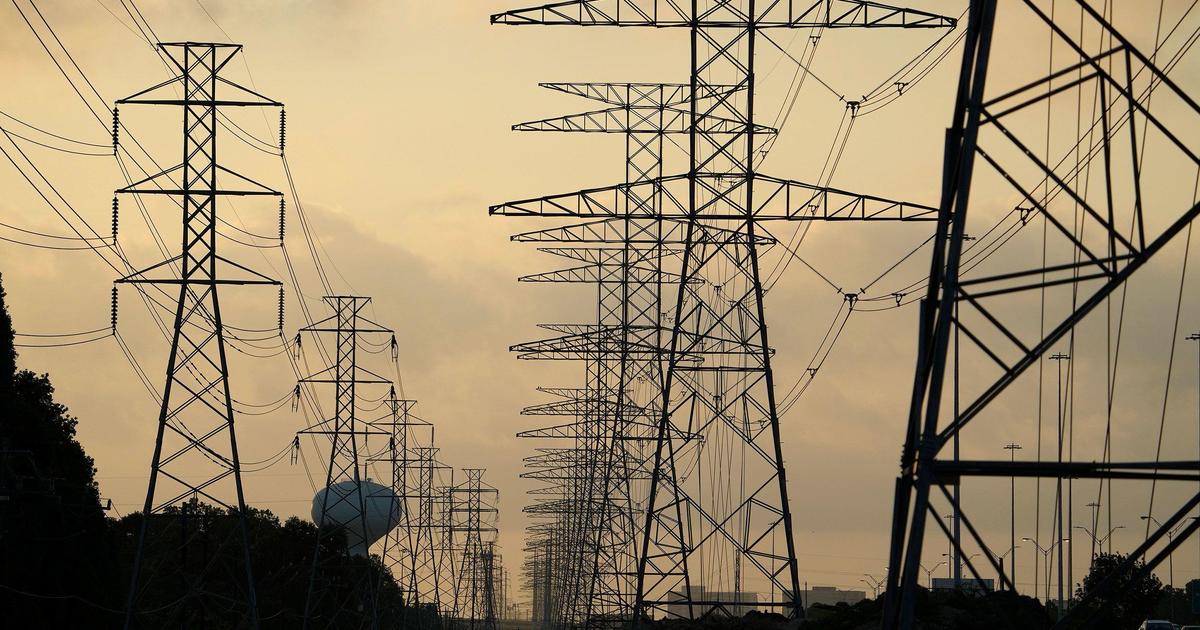Members Of Hitler's Army On The Shores Of White Rock Lake
DALLAS (KRLD) -- During the second World War, almost 80,000 German and Italian Prisoners of War were shipped to Texas. From 1944 to 1945, several hundred of them were held in a camp on Winfrey Point, along the eastern shore of White Rock Lake in Dallas.
But, now, all that is left of the POW camp is a seemingly misplaced fire hydrant, which sits between a softball field and a practice cage.
"If you had 200 young men living in wooden buildings, you'd want a fire hydrant close by, too," says Sally Rodriguez.
The former Dallas city employee discovered information about the old POW camp through her work in the Parks and Recreation Department. Many of the images she collected are published in Arcadia Publishing's Images of America Series in "White Rock Lake" and "White Rock Lake Revisited".
Extended version of story heard on KRLD
U.S. History Professor Steven Butler composed the text that appears on the 2006 historical marker at Winfrey Point. It tells the story of the spot and its transformation during World War II from a Civilian Conservation Corp camp to a holding facility for hundreds of German Prisoners of War.
Butler also spearheaded the efforts to get the marker installed, inspired by the information he uncovered while researching his book about the history of White Rock Lake, "From Water Supply to Urban Oasis".
He says there was quite a bit written about the POW camp in the local press at the time.
"The fact that you had members of Hitler's Army camped out here on the shores of White Rock Lake piqued people's interest," Butler says. "People wanted to know about it."
The cabins that the POWs were held in had been built by members of the Civilian Conservation Corp (CCC). The CCC was one of the first programs President Franklin Delano Roosevelt launched as part of his New Deal during the Great Depression. The federal program employed young men from all over the country and put them to work outside.
Most of the men assigned to White Rock Lake were from Dallas and Collin counties. "They built some of the walls around the lake to prevent erosion," says Butler.
The young men also constructed the buildings at Winfrey Point, Sunset Bay and Flagpole Hill. "They really did all sorts of things that we still enjoy today."
Full interview with Dr. Steven Butler, PhD, recorded at Winfrey Point
The bombing of Pearl Harbor in 1941 launched the United States into war and turned many of the young men of the CCC into soldiers. There were a couple of ideas about how to use the cabins at White Rock Lake during the war. Some of these are detailed in the transcript of a 1976 interview with former Dallas Parks Director L.B. Houston, conducted by researchers with Texas Tech University. A portion of the transcript was provided to KRLD by City of Dallas archivist John Slate.
One proposal from the U.S. Army Medical Corp was to set up a clinic for people who had venereal diseases.
"You talk about trouble hitting the fan, it really did," the transcript reads.
In the end, the camp was used to house German soldiers who had been part of Rommel's Afrika Korp. The several hundred soldiers who were shipped to Camp White Rock were some of the 230,000 Axis soldiers captured in Northern Africa. POWs from those battles were sent to Texas because of standards set during the 1929 Geneva Convention, requiring that POWs be held in a climate similar to the one they had been captured in.
Butler says his research indicates that all of the German soldiers were sent back to Europe when the war ended. However, at least one of the POWs did not want to leave the U.S. and worked to try and come back. In 1951, a former German POW named Hans-Jochem Sembach wrote a letter to the Dallas Morning News, asking for someone to help him return to the U.S. and "old Texas".
In his letter, Sembach talks about being driven to Fair Park to work. According to Samantha Dodd with the Dallas Historical Society, the city of Dallas leased parts of Fair Park to the Army during World War II. Several of the buildings served as storage , and at least one building was used as a workshop.
The transcript of the 1976 interview with L.B. Houston refers to the soldiers working, and Butler found newspaper accounts describing the type of work the POWs were doing.
"They would go to what we now call the Centennial Building. The Army Quarter Master Corp had a repair facility set up inside," Butler says. "They repaired everything. They repaired tents and mess kits and banged the dents out of helmets."
All of the work done by the German POWs was voluntary. Under the articles of the 1929 Geneva Convention, Prisoners of War could not be forced to work toward the enemy's war effort.
The end of the war ushered in the GI Bill and a chance for returning veterans to go to college. Universities across the country were flooded with students, including Southern Methodist University in Dallas, which simply did not have enough dorm space. An on-campus building boom was launched, but student housing was needed in the interim. So, the soldiers turned college students were put up in the camp at Winfrey Point.
Butler says that he wanted the monument installed on the site because the activities that took place on Winfrey Point in the 1930's and 40's have a unique connection to a larger national experience.
"People forget that national history is a collection of our local histories," says Butler. "The Depression was being dealt with right here in the shores of White Rock Lake. And then along come these Prisoners of War. All history is local, ultimately."
Edited by Brigitte Cummings
RETURN TO KRLD'S YOUR HOMETOWN PAGE
(©2014 CBS Local Media, a division of CBS Radio Inc. All Rights Reserved. This material may not be published, broadcast, rewritten, or redistributed.)
More Hometown Articles:
